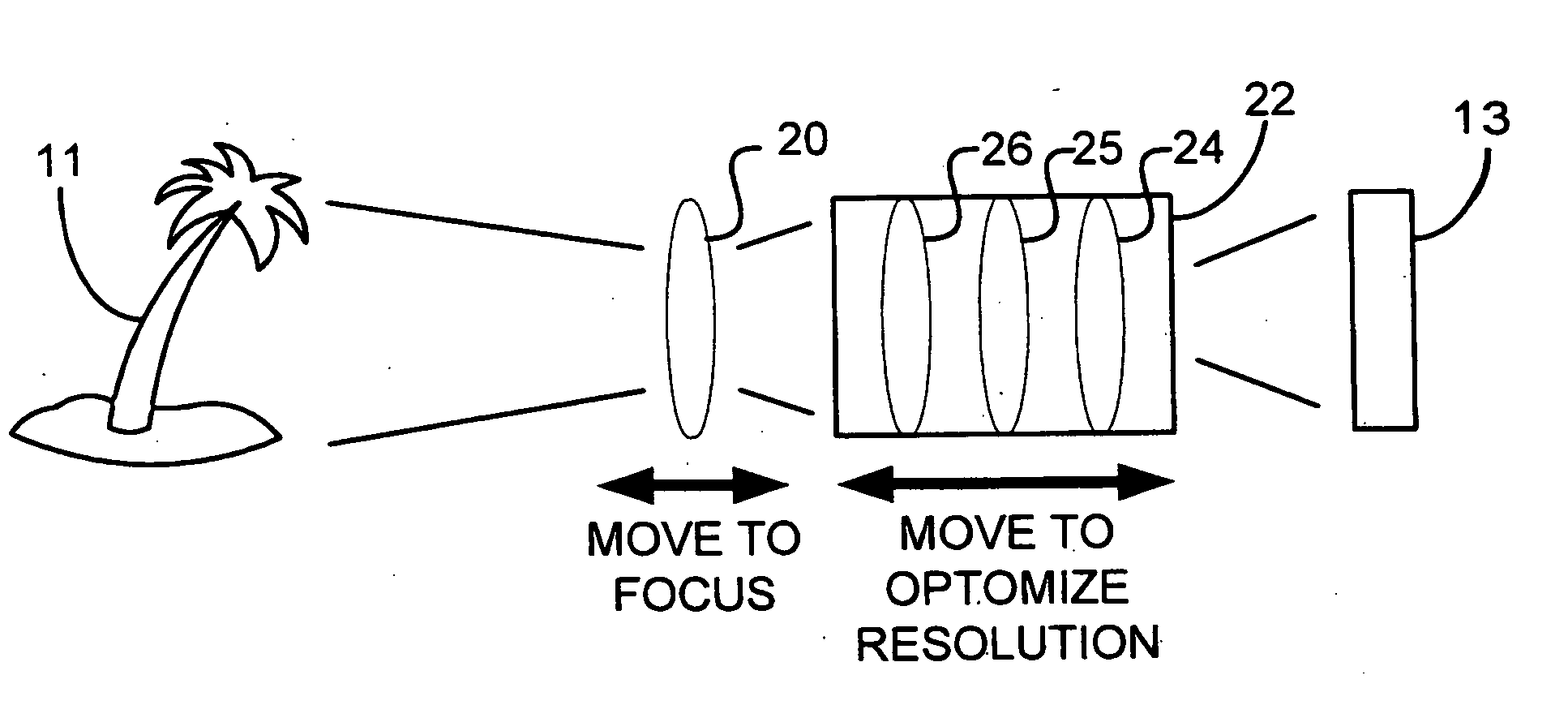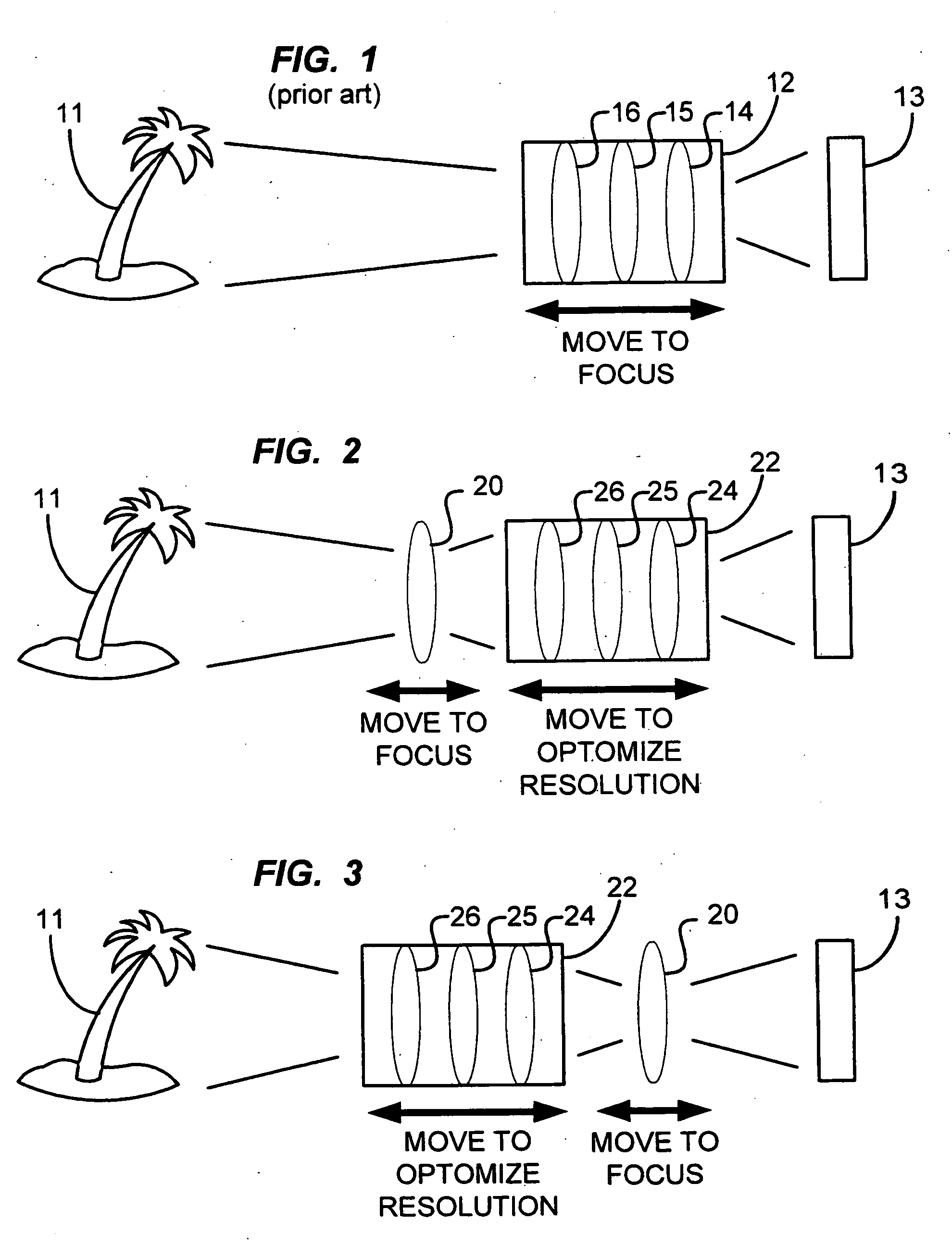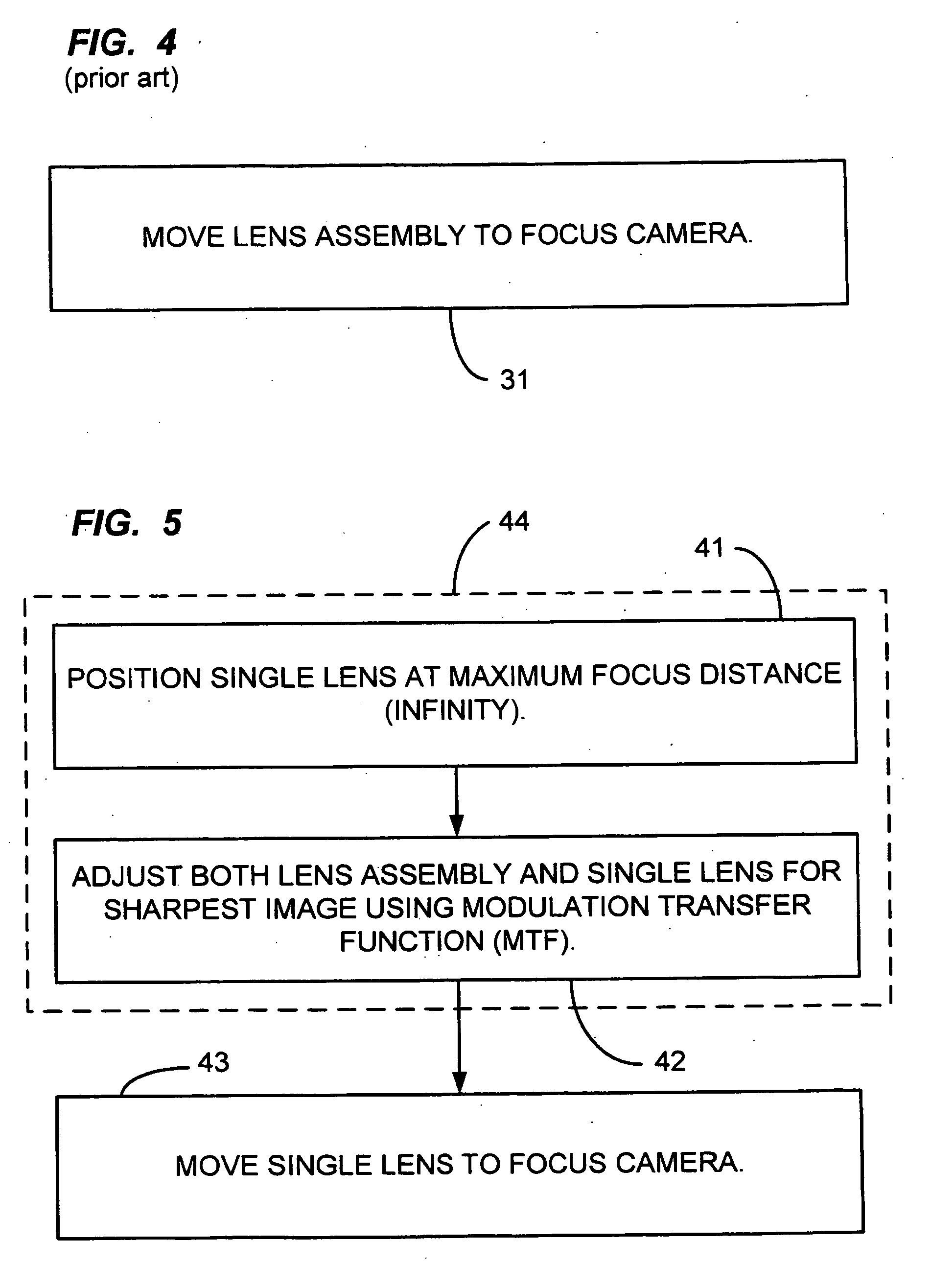Resolution adjustment for miniature camera
- Summary
- Abstract
- Description
- Claims
- Application Information
AI Technical Summary
Benefits of technology
Problems solved by technology
Method used
Image
Examples
first embodiment
[0066]FIG. 8 is a table of exemplary lens parameters associated with the lenses of FIG. 8, according to the present invention.
[0067]FIG. 9 is a table of exemplary nominal values for parameters associated with the aspheric lens of FIG. 8, according to the first embodiment of the present invention. As those skilled in the art will appreciate, an even aspheric surface is defined as:
Z=(y2 / r) / [1+{1−(K+1)(y / r)2}1 / 2]+A4y4+A6y6+A8y8+A10y10+A12y12+A14y14
[0068] where z represents the coordinate in the direction of the optical axis, r is the curvature radius of the surface, y represents the radial distance from the optical axis, K represents a conic coefficient, and A4, A6, A8, A10, A12, and A14 represent spherical coefficients. The two even aspheric surfaces are defined in the tables of FIGS. 9 and 19.
[0069] This formula applies to the tables of both FIG. 9 and FIG. 19.
[0070]FIG. 10 is a chart showing the polychromatic diffraction modulation transfer function (MTF) of the first embodiment...
second embodiment
[0078]FIG. 18 is a table of exemplary lens parameters associated with the lenses of FIG. 8, according to the present invention.
[0079] In the table of FIG. 18, D7 can be from approximately 1.01 to approximately 1.31 millimeter and D9 can be from approximately 0.593 to approximately 0.293 millimeter for an object at a distance between 10 centimeters and infinity with respect to the first surface of lens assembly 702.
[0080] The field of view is 57.6 degrees. The F number is between 2.9 and 3.0 for an object at a distance between 10 centimeters and infinity with respect to the first surface of lens assembly 702.
[0081]FIG. 19 is a table of exemplary nominal values for parameters associated with the aspheric lens of FIG. 8, according to the second embodiment of the present invention.
[0082]FIG. 20 is a chart showing the polychromatic diffraction modulation transfer function (MTF) of the second embodiment of the present invention, for an object at infinity. The MTF at spatial frequency o...
PUM
 Login to View More
Login to View More Abstract
Description
Claims
Application Information
 Login to View More
Login to View More - R&D
- Intellectual Property
- Life Sciences
- Materials
- Tech Scout
- Unparalleled Data Quality
- Higher Quality Content
- 60% Fewer Hallucinations
Browse by: Latest US Patents, China's latest patents, Technical Efficacy Thesaurus, Application Domain, Technology Topic, Popular Technical Reports.
© 2025 PatSnap. All rights reserved.Legal|Privacy policy|Modern Slavery Act Transparency Statement|Sitemap|About US| Contact US: help@patsnap.com



